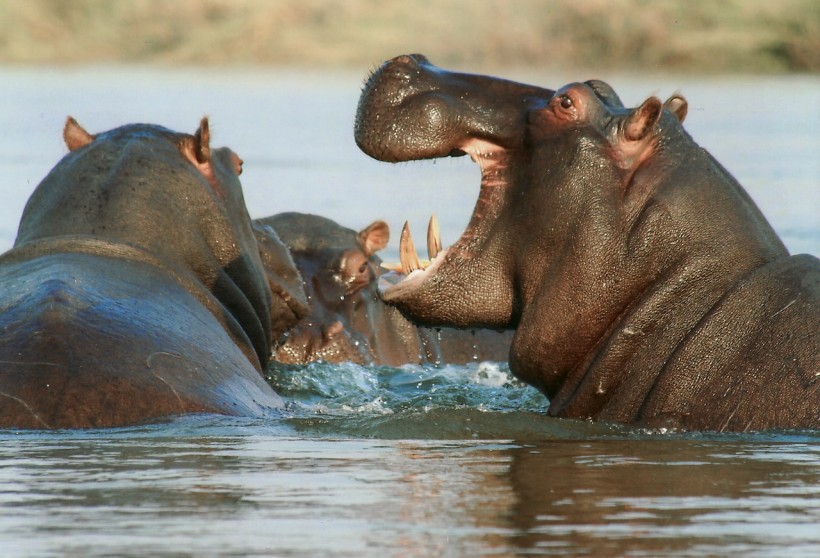Hippos tend to spend most of their days close to pools, lakes, mudholes, or moving river waters. Though they may appear cute, these massive creatures have canine teeth that could span 20 inches. They typically use these teeth to fight off fellow hippos and predators. As they are surrounded by wildlife predators, their defensive characteristics are quite necessary.
Given their massive size, one may wonder about what these creatures eat. While they may appear to be meat-eating, are hippos really carnivores?
Hippopotamus Diet: Are Hippos Meat-Eaters?
In actuality, hippos are mainly herbivorous, which means that they are typically plant consumers. In fact, their diet consists of up to 80 pounds of grass each night. On top of this, they also eat fruits that they find during their scavenges during the night.
However, they have also been seen to have omnivorous behaviors. A 2015 study revealed that these creatures feed on animal carcasses occasionally. They are also known to be consumers and attackers of certain animals, such as zebras, kudus, wildebeests, and other hippos in cannibalism cases. They are also after other predators' meat.
These creatures also attack humans. In fact, their attacks account for 500 human deaths every year in Africa. These incredibly strong creatures use their massive strength to kill intruders.
ALSO READ: Research Proves Hippo Dung Causes Silicon Concentration in Mara River
Life of a Hippo
Hippos are considered the third-largest land mammal alive. They can grow up to five feet tall and 10 feet long. They can weigh as much as 3,000 to 10,000 pounds.
These creatures are typically dangerous and aggressive. Especially when their massive size is paired with hunger, they become dangerous threats to other animals.
Interestingly, despite how they tend to dwell close to watery areas, hippos are unable to swim. Because of the density of their bodies, they find it hard to remain floating. For them to lurk inside water, they need to push themselves off the river bottom or just walk around the area.
Common hippos can be spotted in sub-Saharan African areas and East Africa. They tend to dwell near sources of water, given their amphibious nature. In fact, they can spend around 16 hours each day inside the water.
On the other hand, pigmy hippos, which are smaller hippo species that are classified as endangered, can be spotted in West Africa.
When it comes to gestation, this period for female hippos lasts for eight months. These females can only bear one baby hippo at a time. Newborn calves weigh from 50 to 110 pounds at birth. During the calf's first eight months, it nurses while its mother stays on land or it swims under the water to suckle. When the calf dives into the water, it closes its ears and nose to block water out. They also have membranes that help protect and cover their eyes when they are under the water. Every hippo has this unique ability.
RELATED ARTICLE: WATCH: Hippo Snores Out Bubbles While Taking Underwater Nap In Her Tank
Check out more news and information on Animals in Science Times.















